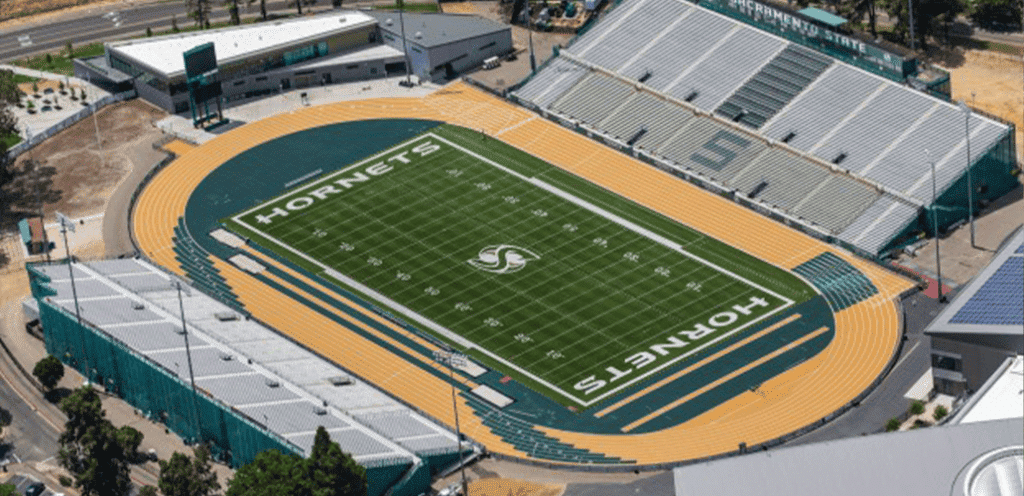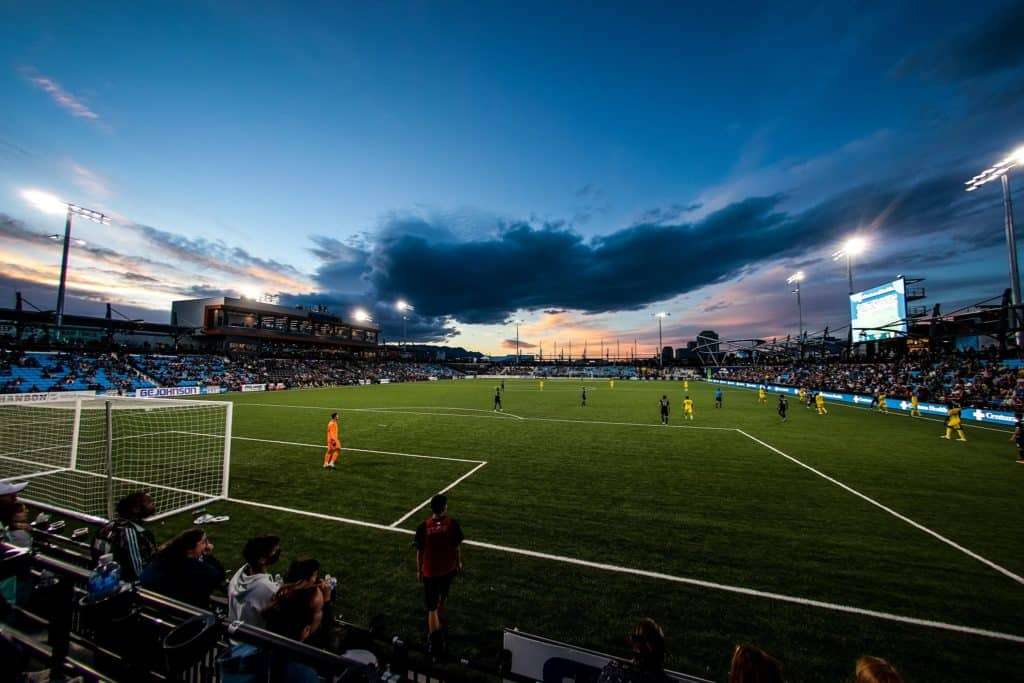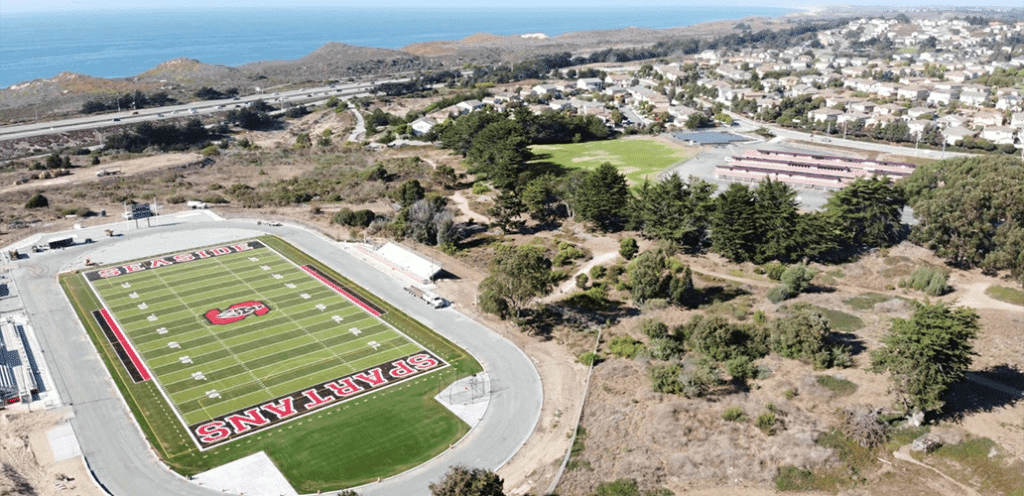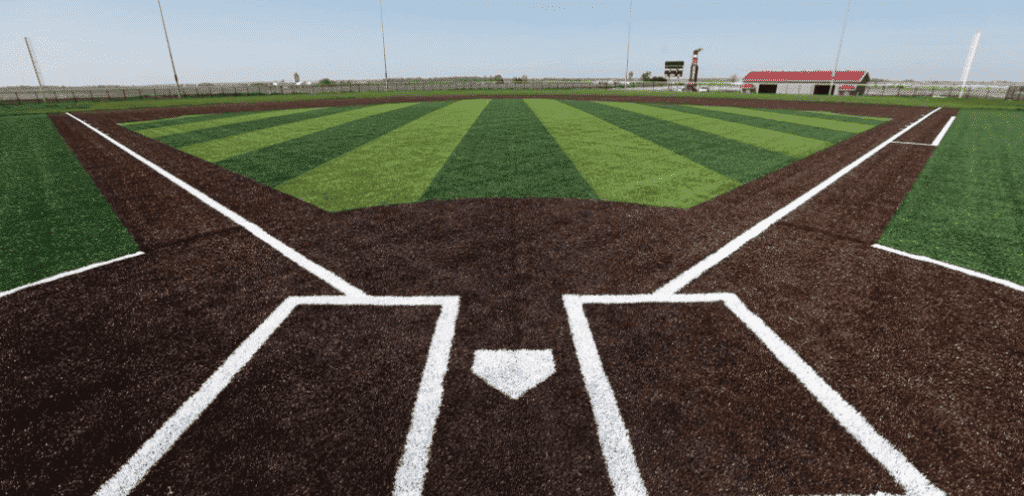Call us at 855-464-8873 or Schedule a Consultation
When it comes to playing surfaces, the debate between natural grass and artificial turf has been ongoing for years. Professional and amateur sports alike have grappled with the decision between the two for their playing fields. Each option presents its own set of advantages and disadvantages, but which one is truly better? In this article, we’ll talk about both options and explain why ProGreen’s field turfs can make the decision much easier.
ProGreen Advantage: ProGreen’s dedication to offering natural-looking and natural-feeling artificial grass bridges the gap between natural and synthetic turf, providing a safe, durable, and visually appealing alternative for various applications.
Player Preferences: The choice between natural grass and artificial turf often boils down to personal preference, with some athletes preferring the organic feel of natural grass while others appreciate the consistency of artificial turf.
Economic Benefits: Artificial turf can be a cost-effective option over time, requiring less maintenance and downtime compared to natural grass, ultimately saving money in the long run.

Before we dive into the pros and cons of real grass surfaces versus artificial grass, you should first understand the fundamentals of each. Regarding sports, natural grass has been the traditional choice for playing surfaces for centuries. (Of course, artificial grass just didn’t exist way back when.) Its organic nature provides a soft and forgiving surface, which is ideal for reducing the impact of falls and collisions. However, a natural grass lawn requires maintenance to upkeep its pristine condition.
On the other hand, artificial turf offers a synthetic alternative that aims to mimic the look and feel of natural grass. Artificial grass gained popularity due to its durability and low maintenance requirements. It provides a consistent playing surface regardless of weather conditions and heavy use. However, concerns regarding injuries on artificial turf have sparked debates within the sports community.
Outside of sports, artificial grass is gaining popularity simply because of its improved design. When people first started using artificial surfaces in place of a natural grass field or lawn, it didn’t look great. Modern artificial grass products have greatly improved since then, and ProGreen prides itself on being the best in the market. Now that people have the option between a nice-looking natural grass lawn and a nice-looking artificial grass lawn, the choice becomes more difficult.

Back to sports, one of the primary concerns when comparing natural grass and artificial turf is the risk of injuries. Numerous studies have examined the relationship between playing surfaces and injury rates among athletes. While artificial turf is praised for its durability and consistency, some research suggests that it may increase the risk of certain injuries, particularly foot and ankle injuries.
According to studies conducted by sports medicine experts, athletes playing on artificial turf may experience higher rates of foot and ankle injuries compared to those playing on natural grass. The surface’s unforgiving nature, combined with the use of blade-shaped cleats, can lead to increased strain on athletes’ lower extremities. This has led some organizations, such as the NFL Players Association, to advocate for natural grass playing surfaces to reduce the risk of injuries.
The level of intensity may be starkly different between professional athletes and everyday people. Unlike natural grass, artificial grass can withstand a lot of elements, like harsh sun exposure, heavy foot traffic, and rambunctious kid and pets. However, unlike other brands, ProGreen’s artificial grass is designed with safety and high-intensity in mind. You shouldn’t have to pay more to have the same level of safety. We provide artificial grass fields that truly mimic natural grass in such a way that you can feel just as safe.

While natural grass offers a softer and more forgiving playing surface, it comes with significant maintenance requirements. From regular mowing and watering to fertilizing and aerating, natural grass fields demand ongoing care and attention. This can translate to higher maintenance costs and potential downtime for field maintenance of the natural grass lawn.
On the other hand, artificial turf requires minimal maintenance compared to natural grass. Once installed, artificial grass provides a consistent playing surface year-round, regardless of weather conditions. It is specifically designed to withstand harsh conditions and heavy use. The long-term maintenance costs associated with artificial turf, including periodic cleaning and infill replenishment, are not as high as they are for natural grass.
Synthetic turf can be a great option for you if you want to save time and money maintaining your lawn. If you expect to host intense football games, you shouldn’t have to think about whether artificial grass or natural grass would be better. Our artificial turf compared to natural turf will always win out in the long run when it comes to maintenance requirements.

Beyond safety and maintenance considerations, the choice between natural grass and artificial grass can also impact gameplay and overall athlete experience. Some athletes argue that natural grass provides a superior playing surface, allowing for better traction and maneuverability. Others argue that artificial turf offers a more predictable surface, ideal for fast-paced sports like soccer and football.
Professional athletes, including NFL players and soccer stars, have weighed in on the debate, sharing their preferences based on personal experiences. While some athletes prefer the consistency of artificial turf, others swear by the natural feel of grass under their feet. Ultimately, the choice between natural grass and synthetic turf often comes down to personal preference and the specific needs of the sport.
However, Progreen makes the choice easy. Our synthetic turf is manufactured to match the advantages of natural grass. While the decision is based on personal preference, you should be able to compare apples to apples, which is why ProGreen is the leader in artificial grass products. Overall, a natural grass lawn in its prime will smell good, look good, and feel good. Our artificial grass will look good, feel good, and do good to your bank account!
In the ongoing debate of natural versus artificial grass, there is no one-size-fits-all answer. Each surface offers its own set of advantages and disadvantages, from safety considerations to long-term maintenance requirements. But the choice becomes much easier with ProGreen products. Our dedication to offering natural-looking and natural-feeling artificial grass has allowed us to create products that bridge the gap between natural and synthetic turf.
Do you prefer the organic feel of natural grass? So do we. Do you want to feel safe when playing on the field? So do we! The durability of our artificial playing surfaces is unmatched, but we haven’t sacrificed safety or feel for longevity. We prioritize what you should prioritize, offering a safe, soft, durable, long-lasting, money-saving alternative to natural grass that you can enjoy for years.
Contact ProGreen today to learn about our artificial turf products and see if it is the right option for you.